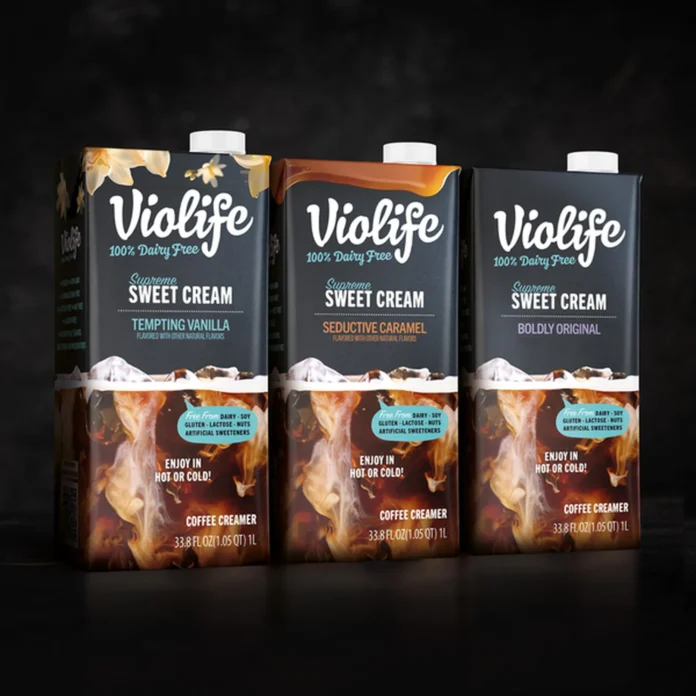
By Eric Kroll, principal with Baker Tilly’s manufacturing and distribution practice
Key Takeaways:
- The food and beverage industry faces significant policy changes around energy and deregulation, with potential benefits from domestic energy production and reduced regulations, though the future of clean energy credits remains uncertain.
- Labor challenges loom large for the industry, particularly regarding potential immigration policy changes that could affect the workforce, leading many companies to turn to AI and automation as a solution.
- Tax and tariff policies pose complex implications — while increased tariffs aim to protect domestic industry, they may raise costs for manufacturers, and the expiration of Tax Cuts and Jobs Act provisions in 2025 could particularly impact pass-through entities in the sector.
The next four years could end up being very interesting for food and beverage manufacturers and producers. From tariffs and taxes, to labor, energy and sustainability, new White House policies will undoubtedly impact the F&B industry.
Oil and energy
Throughout last year’s election, President Trump touted his goal of U.S. “energy dominance,” committing to reducing domestic energy prices by 50% in the first 12 months of his tenure. The administration pledged to expand fracking (short for hydraulic fracturing) by opening drilling permits. Increased fracking will increase gains in domestic crude oil and natural gas output. What’s unknown is if increased fracking will materialize into cost savings for F&B companies.
An increased emphasis on domestic energy production could initially benefit the industry in multiple ways. If domestic energy prices drop, it could help bring down overall costs of production and transportation, which increases bottom-line profitability. Higher profits, in turn, could drive capital expansion and innovation across the F&B industry.
One unknown is the new administration’s impact on energy credits offered by the Inflation Reduction Act (IRA). The Biden administration introduced the IRA which led to significant clean energy investments throughout different industries and even benefited a number of manufacturers in Republican-leaning states. While many of the IRA provisions benefiting individual consumers may dry up, we do not know what will happen to energy credits relating to manufacturing because of the bipartisan support behind these initiatives.
Deregulation
The past offers us clues as to what is in store for the F&B industry in terms of regulation. With a pro-business agenda, President Trump’s administration could lead to looser regulations in the areas of energy, OSHA rules, EPA policies, and banking. In addition to opposing green initiatives and regulatory requirements, the president has already pulled the United States out of the “Paris Accords,” the legally binding international treaty adopted in 2015 at the UN Climate Change Conference (COP21) in which participating countries agreed to monitor and update their greenhouse gas emission regulations. To note, he also pulled out of the agreement in his previous administration.
Deregulating rules like emissions policies would likely have a positive impact on the F&B industry, but to what level is unknown. Similarly, if there is less regulation and red tape in the banking sector, F&B companies may gain more access to capital.
One interesting federal agency to watch is the Food and Drug Administration (FDA). We recently saw the FDA ban Red Dye #3, and the agency is looking at other proposals. One that would affect the F&B industry is a proposal aimed at requiring nutritional information to be placed on the front of packaged food to provide at-a-glance information about saturated fat, sodium, and added sugar. If this proposal passes, most F&B companies would have three years to add the “nutrition info box” to their packaged food labels. Manufacturers with less than $10 million in annual sales would be expected to comply within four years after the initiative is finalized.
The FDA’s proposal aligns with the public’s insatiable interest in health and nutrition. Trump’s pick to lead the Department of Health and Human Services (DHHS), Robert F. Kennedy, Jr., is also focused on transparency in food additives, and will likely voice a strong opinion on the topic of labeling. No matter who is confirmed, a new DHHS secretary would also have the power to reform and restructure the FDA’s food and nutrition center, which, in turn, could have ripple effects throughout the F&B industry.
Overall, deregulation could lower the cost of manufacturing products across the board, including the F&B industry. In general, less regulation removes additional costs and compliance in business, which typically is more favorable to promote a growth environment.
But deregulation in the F&B industry could also lead to unintended consequences and risk. When the regulatory environment changes, companies will need to pivot to comply with the new policies. Manufacturers will need to gain an understanding of how the new relaxed regulations will impact their operating environment.
Immigration and labor
Perhaps one of the most vulnerable variables in the F&B industry is labor. Potential changes in immigration policy could impact the availability of labor in agriculture and food production. If there are significant changes to include mass deportations, companies may face challenges in maintaining their workforce, leading to increased labor costs.
The labor market is already tight, and many Americans are averse to the types of manual jobs associated with agriculture and manufacturing production lines. To stay ahead of immigration policy changes, F&B companies need to assess their workforce and prepare for potential changes to ensure they can adapt quickly. Many F&B companies are already addressing potential labor shortages with the implementation of AI and robotics in their operations, increasing efficiency by automating repetitive tasks while enabling faster production times.
Tariffs and taxes
A cornerstone of the president’s campaign focused on increasing tariffs on imported goods. Not only do tariffs provide a source to federal government funding, the import taxes also support local industry by inducing Americans to buy goods produced domestically.
Tariffs may sound like a good deal for the F&B industry. However, many economists argue that the bulk of tariff costs are passed on to consumers and other industries. For example, the U.S. steel industry may benefit from tariffs, but that cost could be passed down to F&B companies that rely on steel equipment. Another challenge could occur if consumers scale back on certain F&B products when faced with rising inflation, which is often associated with tariffs. In short, the impact of tariffs on the industry is largely unknown, but many expect tariffs to increase inflation, which would have a direct impact on manufacturers who rely on imports for their products.
F&B companies also need to be tracking what is happening with the Tax Cuts and Jobs Act (TCJA) from Trump’s first administration. Many provisions from the TCJA are set to expire at the end of 2025. The legislation that passed in 2017 was a boon to many industries, including F&B, and companies might feel the pinch if these provisions expire.
The reduction to the federal corporate rate under TCJA is permanent. However, a lot of mid-size F&B processors and manufacturers are pass-through entities, including S-corporations, partnerships and limited liability companies. Pass-through entities do not pay tax at the corporate rate, rather owners report their share of business income on their individual returns. And TCJA’s reduction in individual tax rates is set to expire.
If the individual tax rate expires, this will increase the tax liability for F&B businesses that operate as pass-through entities. The TCJA also temporarily allowed 100% expensing for certain business property, referred to as bonus depreciation. As of 2022, the 100% has started to phase down at a rate of 20% per year. In 2025, taxpayers are eligible for 40% bonus depreciation. Absent tax reform, that will decrease to 20% in 2026 and 0% thereafter. This impacts the timing of the tax deduction businesses can take, which impacts their cash flow.
Tax reform is a complicated process and takes more than a presidential decree. Republicans, who captured both chambers of Congress and the White House, will likely attempt to use reconciliation to pass a bill but they have razor-thin margins and competing interests, so successful reconciliation will require significant negotiation. In the near future, this means more unknowns for the F&B industry.
How the F&B industry can prepare
With so much uncertainty about federal policy changes in the next four years, F&B manufacturers need to be proactive and strategic now. A changing regulatory environment, immigration crackdowns, expiration of TCJA provisions, and new tariffs could all have a significant impact on the industry. Companies that can pivot quickly, while staying focused on their core competencies, will continue to thrive in the dynamic, ever-changing business environment.
 Eric Kroll is a principal with Baker Tilly’s manufacturing and distribution practice. He is the firm’s industry food and beverage practice leader. Having more than 20 years of experience serving both public and private manufacturing and distribution companies with global operations. He specializes in delivering comprehensive assurance and advisory services to clients, encompassing a diverse range of operational and financial domains. Eric excels in financial auditing, merger and acquisition (M&A) due diligence, operational analysis, cash flow budgeting and enhancing business processes through optimization and improvement of controls.
Eric Kroll is a principal with Baker Tilly’s manufacturing and distribution practice. He is the firm’s industry food and beverage practice leader. Having more than 20 years of experience serving both public and private manufacturing and distribution companies with global operations. He specializes in delivering comprehensive assurance and advisory services to clients, encompassing a diverse range of operational and financial domains. Eric excels in financial auditing, merger and acquisition (M&A) due diligence, operational analysis, cash flow budgeting and enhancing business processes through optimization and improvement of controls.

Credit: Source link













